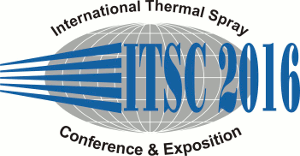| Abstract: |
Corrosion resistant alloys (CRAs) are generally recommended where cheaper carbon steels cannot be used due to technical challenges. The cost of CRAs often prohibit the adoption of emerging technologies, such as carbon capture and storage (CCS) which needs to prove economic viability before its wider adoption. In general, component size and complexity as well as the ratio of improved corrosion resistance versus increased costs govern solutions based on bulk CRAs. However, if carbon steel is coated with a CRA by a cost-effective industrial method where the coating would provide the corrosion resistance, and the carbon steel, the structural integrity then such systems can be used economically as an alternative to monolithic CRAs as structural components.
CRA coatings were sprayed using high velocity oxy-fuel (HVOF) onto carbon steel substrates and holidays were drilled in the coating to expose the steel substrate. These were then tested in 3.5 wt.% NaCl solution for 30 days, bubbled with 10MPa CO2. Tests were conducted at two different temperatures, 40°C and 80°C. Post-test microstructural characterization revealed that the coatings protected the steel substrate from CO2 corrosion when undamaged. The bare steel in the exposed region formed a siderite scale, while no such scale was seen in the case of undamaged CRA-coated steel. The substrate close to the coating showed accelerated corrosion due to galvanic effects.
It can be concluded that thermally sprayed CRA coatings are a candidate to provide cost-effective corrosion mitigation for infrastructures likely to be in contact with wet supercritical CO2. The same coatings can potentially be used as inner lining of pipes for transport of impure CO2. However, care must be taken to ensure that the thermally sprayed CRA layer does not have any through porosity or damage; else, such coatings may accelerate corrosion of the underlying steel due to galvanic interactions.
|
|
